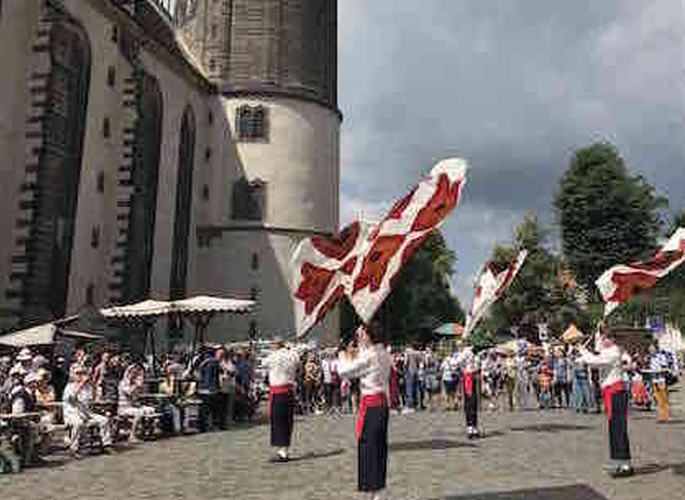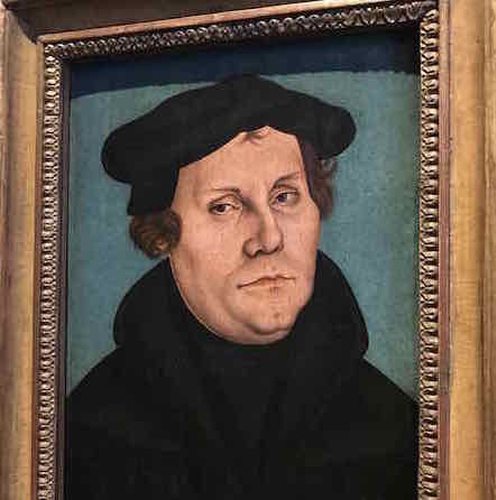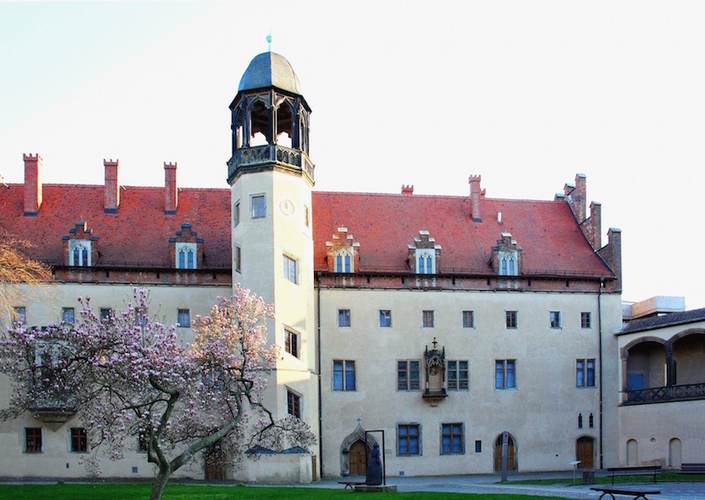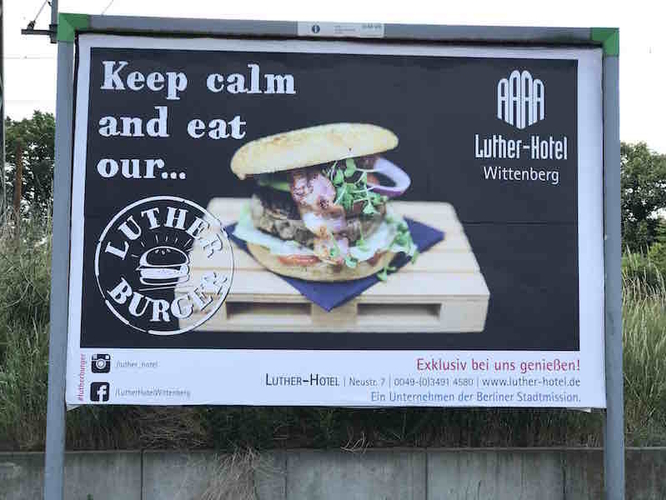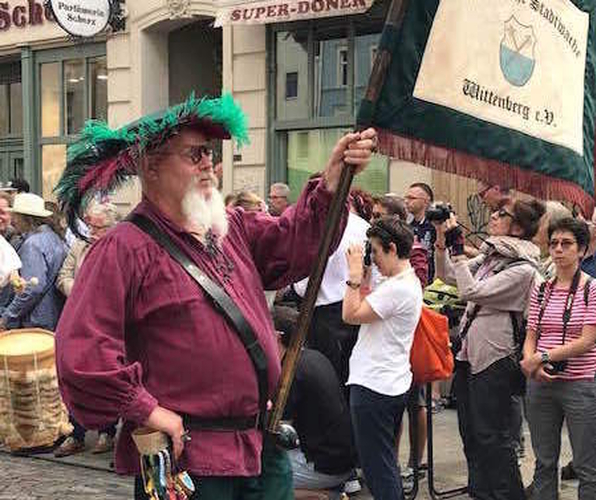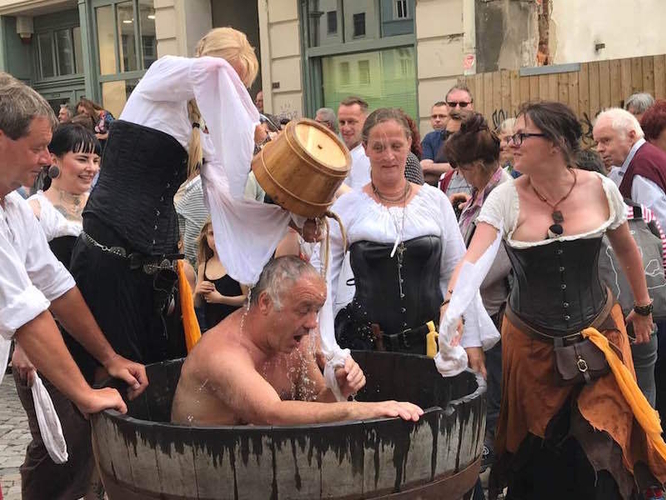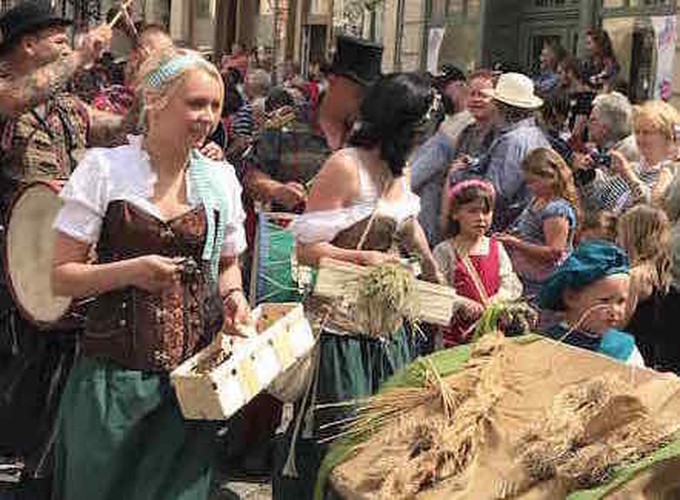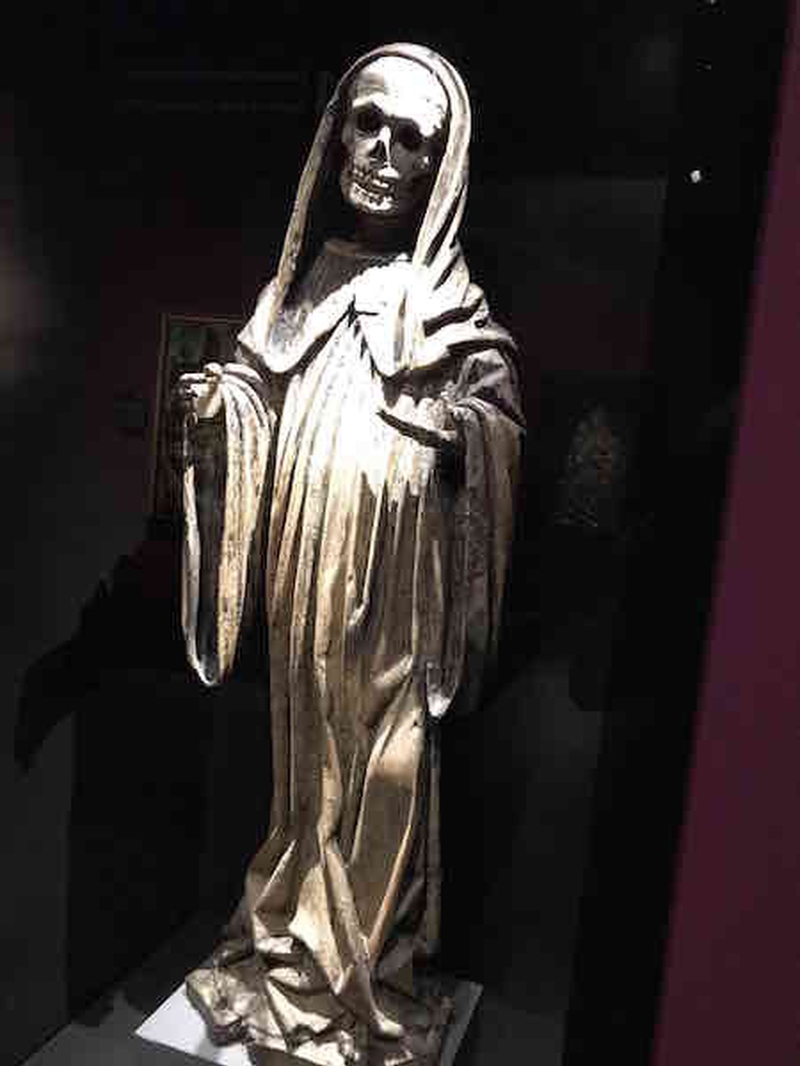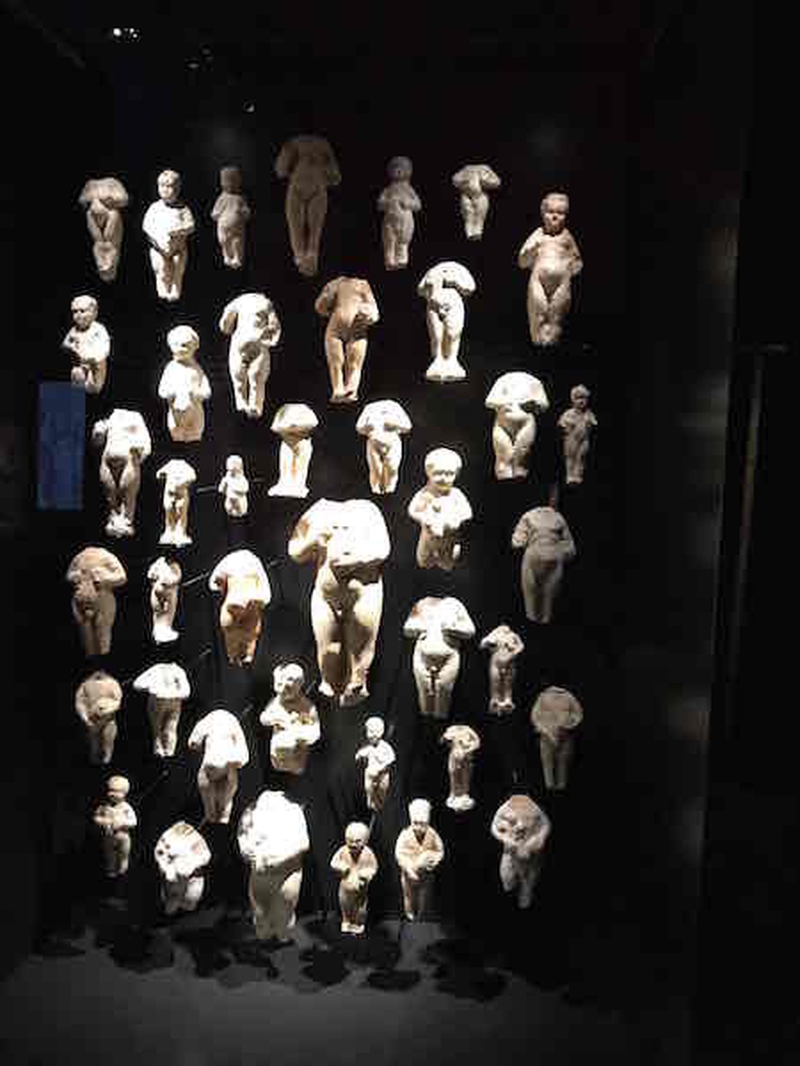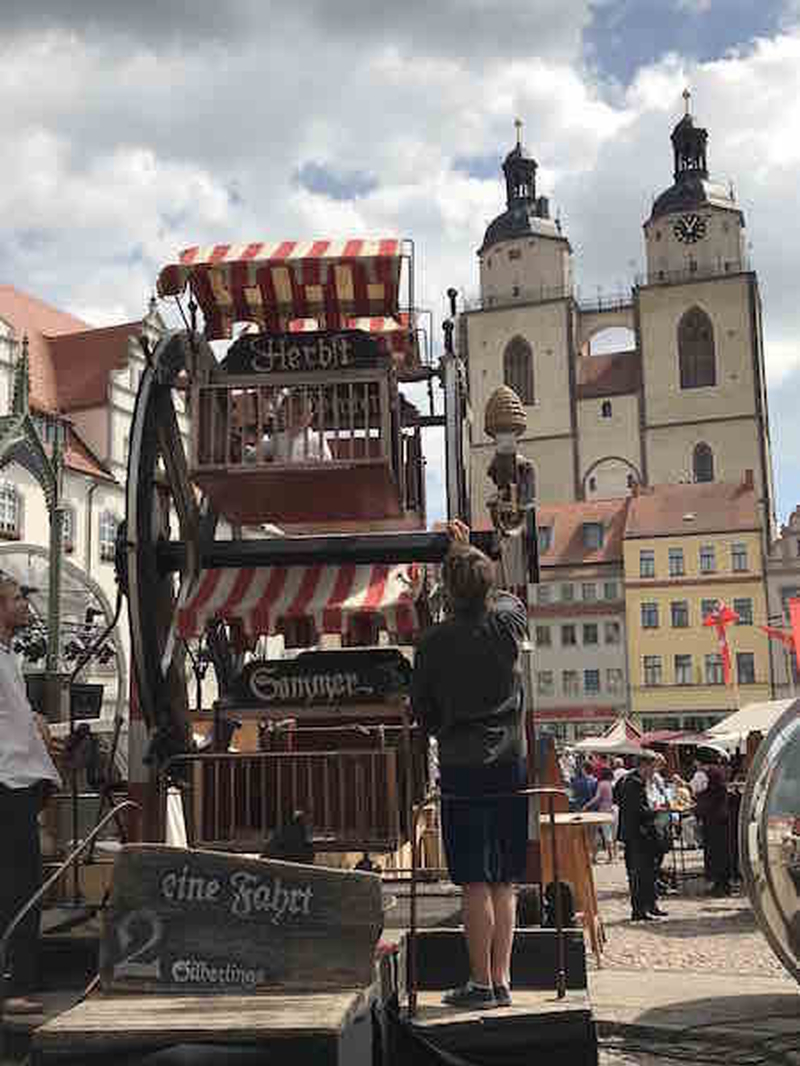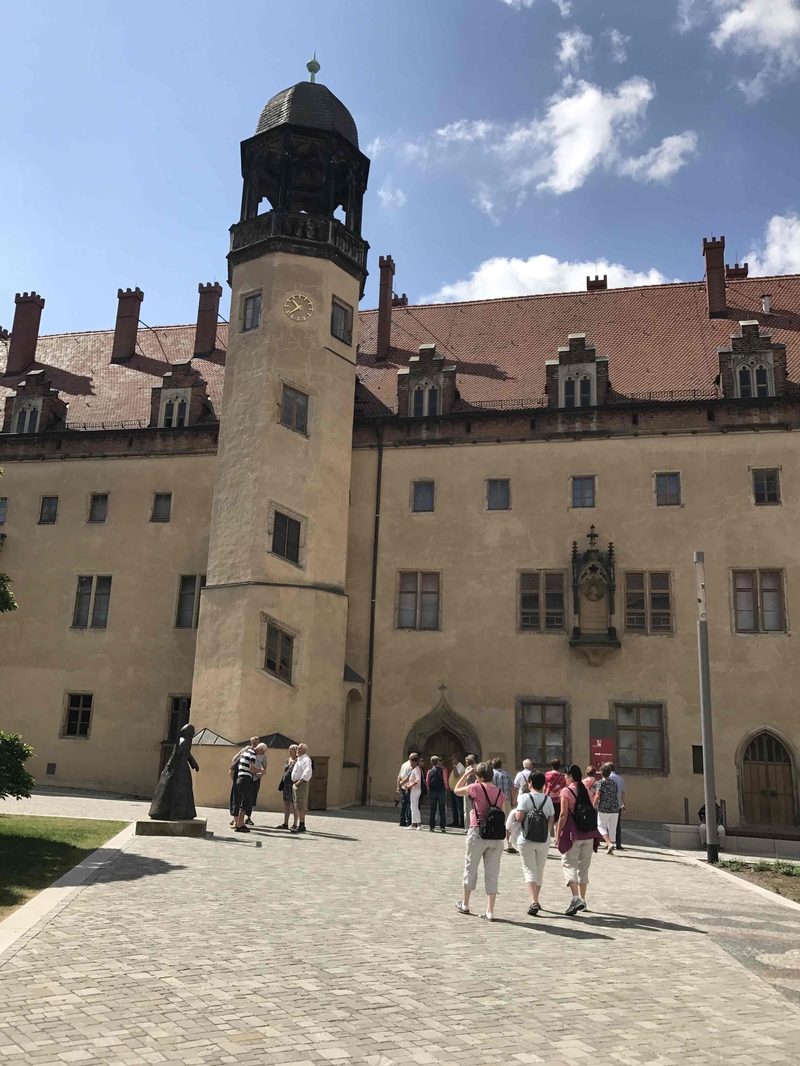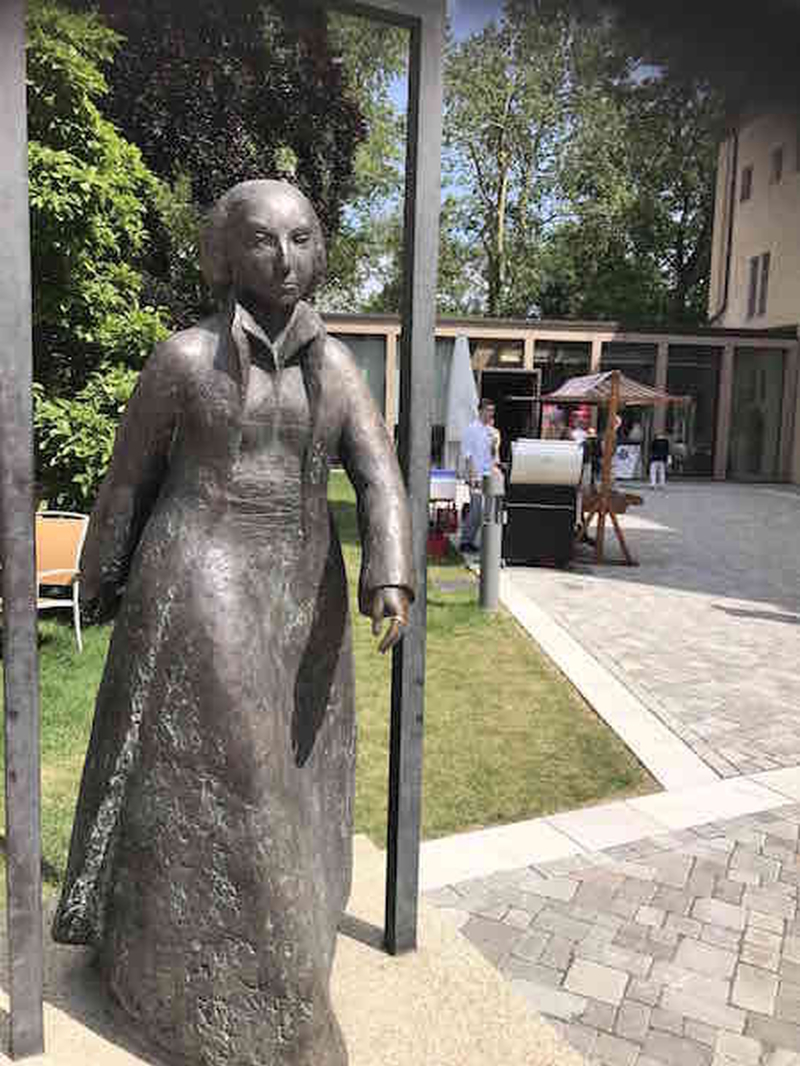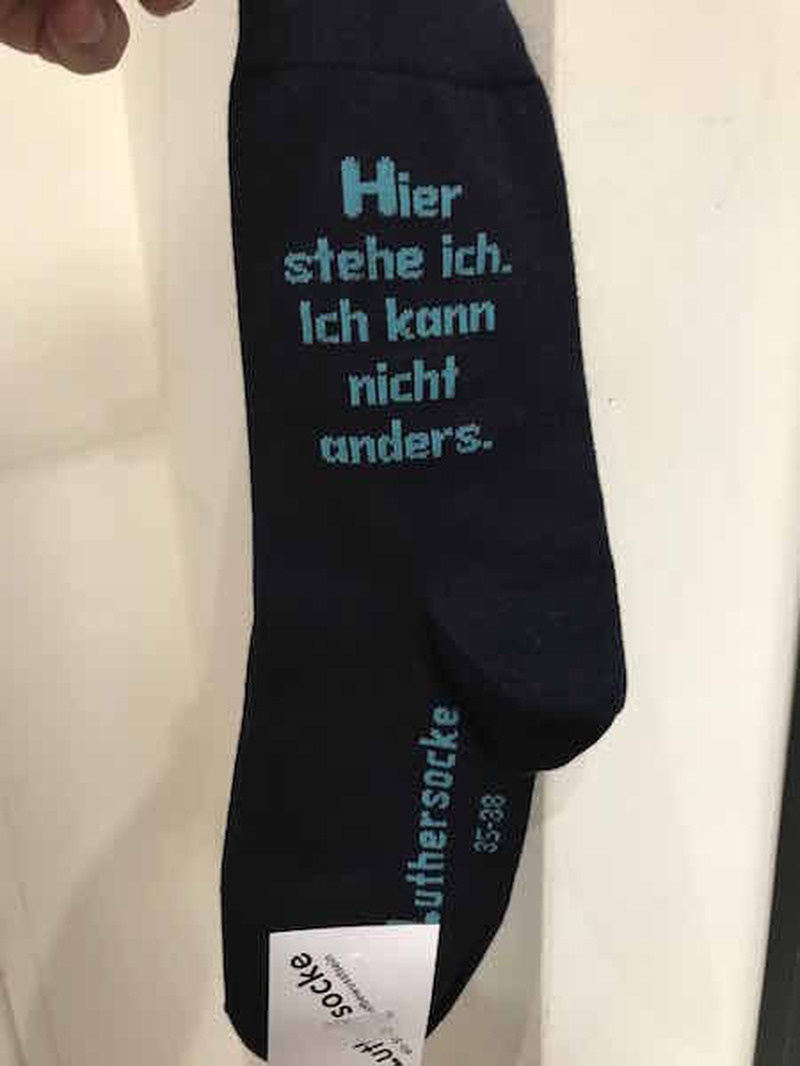Reformation 500 is being celebrated globally – Neil Sowerby travelled to the heart of it
TALK about landing lucky. Wittenberg would be a fascinating place to visit at any time, but to arrive in the middle of Luther’s Hochzeit, the boisterous annual street party celebrating the great Protestant reformer’s nuptials added a certain oompah to my pilgrimage to mark the 500th anniversary of the Reformation.
Search my soul, Germany’s big schism hadn’t felt like an excuse for a knees-up before, yet here were 2,000 costumed extras making whoopee in the picturesque streets… and I joined in along with an estimated 100,000 visitors.
It was a welcome, calm retreat from the over-indulgence outside as the paraders refuelled at the booze and hearty food stalls
The marriage of ex-monk Martin and escaped nun Katharina von Bora, 15 years his junior, sealed his personal breakaway from the Catholic Church eight years after he nailed his Ninety-Five Theses to the doors of the Castle Church (Schlosskirche) in 1517.
These documents questioning the practice of indulgences – purchasing sin ‘escape clauses’ from preachers – had already festered in the in-tray of the Archbishop of Mainz and the nailing story may well be apocryphal (sic).
Still it was good to sit on the terrace of the Alte Canzley hotel, built a century before the 15th century church, and gaze on that famous doorframe. Not the original doors but a bronze replacement from 1848 renovations engraved with the theses. A glass of Ur-Krostizer pils was welcome after pushing through the throng watching a ceremonial flag-dancing show before the spectacular parade. A bonneted ‘wench’ nibbled on a bratwurst on the next bench; inside the church the entertainment had been a choral ensemble performing Bach.
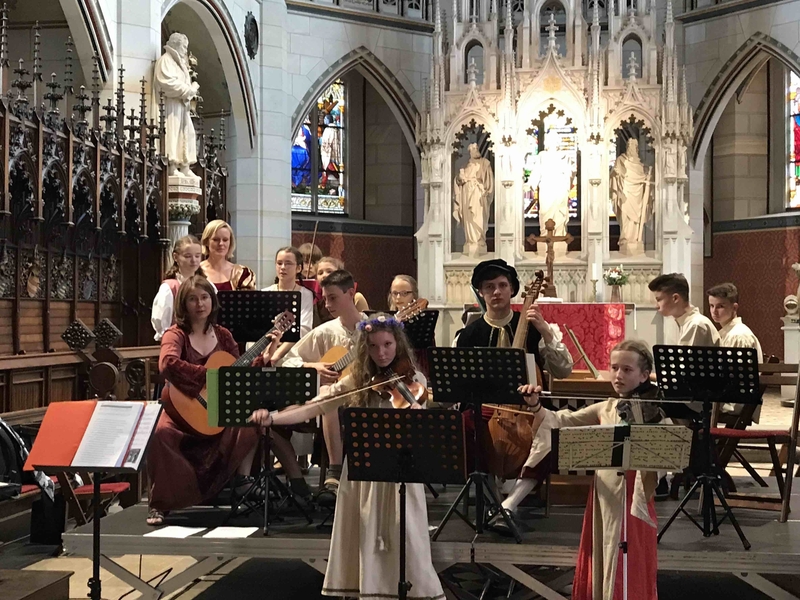
It had taken me 40 minutes by fast train from Berlin across the Saxony-Anhalt plain to reach ‘Lutherstadt Wittenberg’, spared bombing by the Allies during World War II and a World Heritage site since 1996 thanks to a cluster of 16th and 17th century buildings associated with Martin Luther and his followers.
Climb a winding stone staircase for a beautiful over-view from the tower next to the Castle Church, where Luther is buried under the pulpit.
He was married in the Gothic twin-towered Town Church of St Mary’s, where he preached more than 2,000 times. The first Protestant service, in German, took place here in 1521. A large painting by Lucas Cranach the Elder is above the ‘Reformation Altar’ showing Luther receiving the cup at the Last Supper.
The much-restored town, all pastel hues and stone and timber features is long and narrow, laid out along two parallel streets: pedestrian-only Collegienstrasse (which turns into Schlossstrasse) and Mittelstrasse.
One of the first buildings on Collegienstrasse as you enter the Old Town is the huge cloister that was home to Luther, his wife and their six children and numerous acolytes. An aristocrat loyal to the Protestant cause presented it to him. Today it houses the fascinating artefact-packed Lutherhaus museum, highlight of which is the Lutherstube, the perfectly preserved room where he entertained his guests. Immensely atmospheric. The museum as a whole takes you on Luther’s spiritual journey towards the Reformation. HIs original pulpit and his monk’s habit are on show plus perhaps the world’s first watch, Holbein’s definitive portrait and, in the refectory painted on a wooden panel, a depiction of The Ten Commandments from the Cranach the Elder.
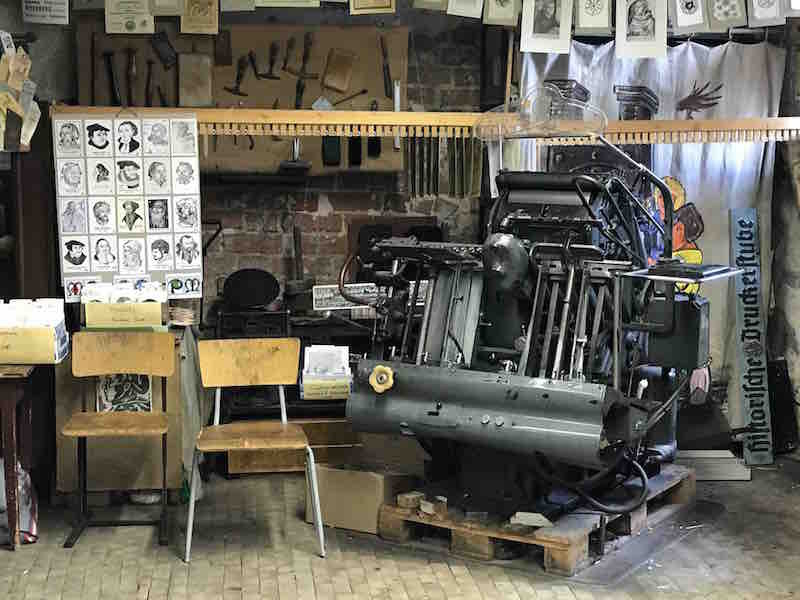
The Cranach House and Studio, with a historical printing press on display, is open to the public at No.1 Schlossstrasse. Interesting as is the Hamlet Haus, a former student lodging associated with the tragic hero because Shakespeare’s play had him study in the town.

Nowhere surpasses in beauty, though, the Renaissance house of Luther’s influential associate, Philipp Melanchthon, a humanist polymath who wrote Europe’s first usable grammar book. This house and study feel a more private place, understandably, than Luther’s – a place for contemplation of the earth-shattering movement the pair created.
It was a welcome, calm retreat from the over-indulgence outside as the paraders refuelled at the booze and hearty food stalls (always remembering that the famously constipated Luther was not averse to life’s earthier pleasures).

En route back to the station I took in the Luther Garden, an anniversary project in the grounds of the town’s fortifications where 500 trees have been planted by Lutheran churches across the world in affirmation of Luther’s avowal "Even if I knew that the world were to collapse tomorrow, I would still plant my apple tree today”.
Wittenberg’s ‘mighty’ tree, though, is the nearby Luther Oak, planted in 1830. It was on this site in 1520 that Martin Luther's supporters piled up a stack of writings of Church doctrine and set them on fire. Luther threw in the Papal Bull, the document threatening him with excommunication unless he recanted his writings.
The huge programme of global events connected to the 500th anniversary has been building up since the Evangelical Church of Germany launched its Luther Decade in 2008 and in Germany it encompasses Luther Trail cities such as Eisenach (where he hid in Wartburg Castle for 300 days) and Erfurt (where he took his vows as a Catholic priest before coming to Wittenberg).
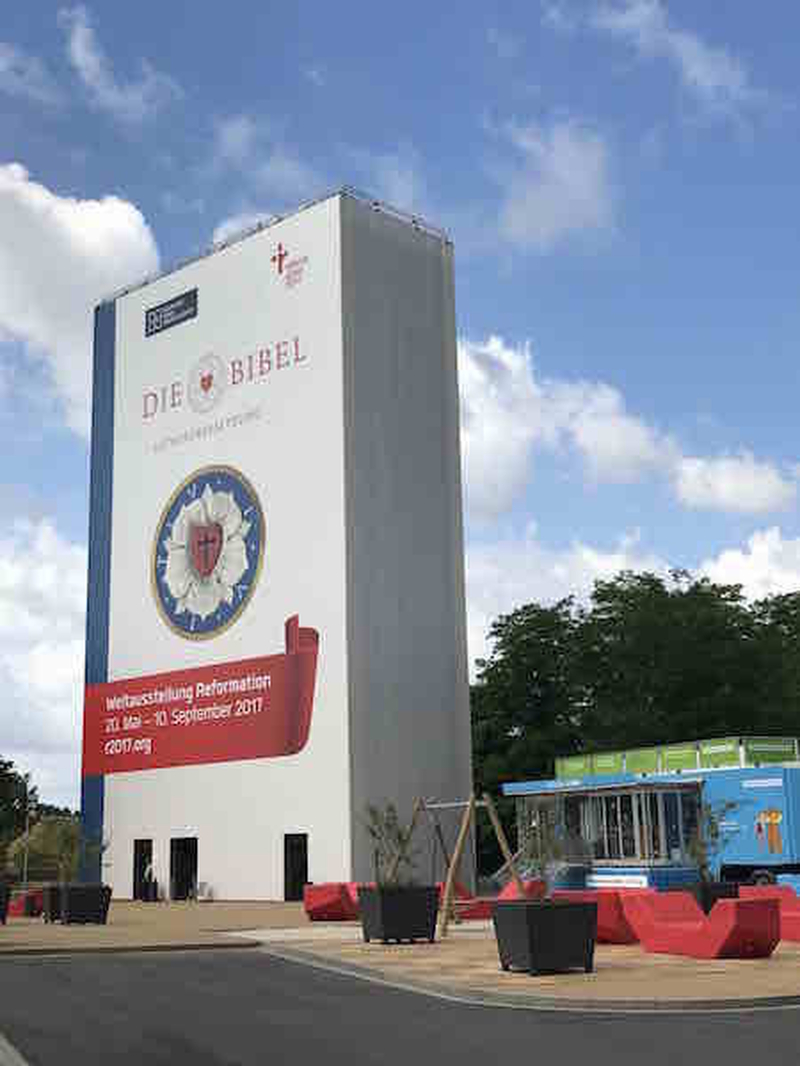
Wittenberg's evangelical message comes in the form of seven ‘Gates of Freedom’, exhibition spaces on various religious themes scattered around town, the most striking of which are The Welcome Gate at the station, a lookout tower built in the form of a Luther Bible and the asisi Panorama, Luther 1517, a 360° panorama created by artist Yadegar Asisi, using light and music to enhance a huge circular image.
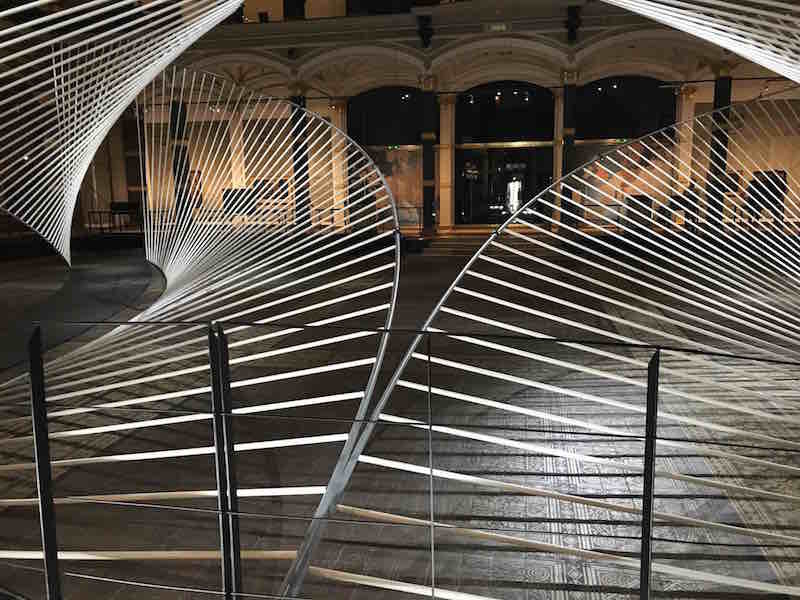
A similarly ambitious installation welcomes you to Berlin’s major exhibition about the Reformation, The Luther Effect, in the central Martin-Gropius-Bau museum space, not far from Potsdamer Platz. You enter the show through a winding corridor made of shafts in the form of a double helix, the complex tangle of light and sounds recreating viscerally the schism unleashed by Protestantism. I was underwhelmed.
The actual exhibition was well curated and thought-provoking. It succeeds in telling a global story of effect and counter-effect that begins around 1500 and continues on into the present. It is depicted using the examples of Germany and Europe 1450–1600, Sweden 1500–1750, North America 1600–1900, Korea 1850–2000 and present-day Tanzania.
The gift shop Luther shelves are fun too. I already possessed the Martin Luther Playmobil; when it was launched in 2015 more than 34,000 figurines complete with Bible in German were sold within 72hours (shop around you can still buy one for around a tenner) and it stars in a cute YouTube account of his life. https://www.youtube.com/watch?v=tox2TflUH90
Out of my price range, though were a pair of Luther Socks, bearing his defiant words to Emperor Charles V: “Hier stehe ich. Ich kann nicht anders” (Here I stand, I can do no other). I went for the Holbein Luther magnet instead.
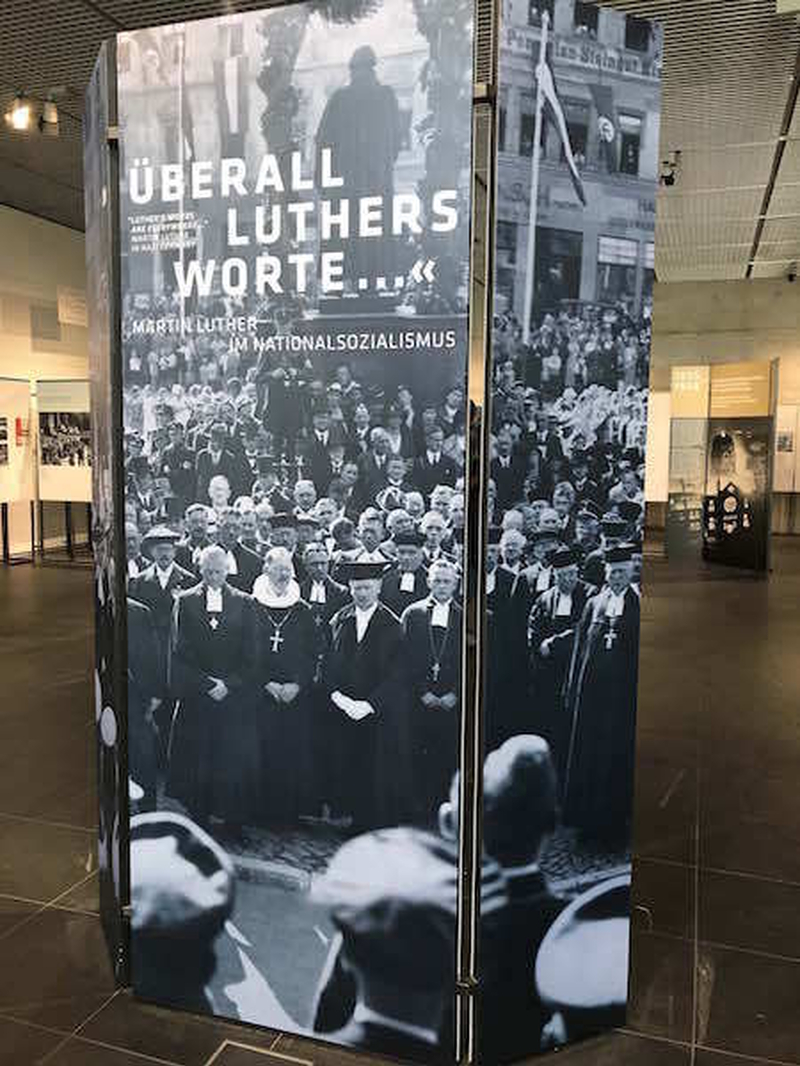
My gleeful mood disappeared at the neighbouring Topographie des Terrors http://www.topographie.de/enpermanent exposition. On the site of Berlin’s Gestapo,secret service and SS HQs, this documentation centre offers a comprehensive account of the rise of Nazism.
Until November 5 2017 it is hosting a special exhibition on ‘Martin Luther in National Socialism’, an account of how Hitler and a sometimes acquiescent church manipulated this iconic German’s words for propaganda purposes. Fake news is nothing new.
FACTFILE
Neil Sowerby flew to Berlin from Manchester with Ryanair, just one of the bargain direct flight options.
In Berlin Neil Sowerby stayed handily at Motel One Berlin Hauptbahnhof, Invalidenstrasse 54, 10557 Berlin, +49 30 36410050.
He travelled the 60 miles from Berlin Hauptbahnhof to Lutherstadt Wittenberg by ICE (Inter-City-Express) train; it costs 50€ return but took just 40 minutes, regional trains take much longer. The station is a 10 minute walk east of the town.
The Tourist Information Office is at the end of Schlossstrasse across from the Castle Church. You can get maps of the town and they rent out D-I-Y audio tours in English. For online information visit https://lutherstadt-wittenberg... and for Luther 2017 this link.
Luther House, Collegienstrasse 54. Adult ticket 8€.
Regretting missing Luther’s Hochzeit. Get to Wittenberg in the build-up to October 31 (the date the 95 Theses were nailed up) and enjoy the Reformationsfest, another medieval fair with the addition of classical concerts, plays, seminars and special church services.
The Luther Effect – Protestantism 500 Years In The World (a German Historical Museum Exhibiiton) Martin-Gropius-Bau, Niederkirchnerstraße 7,10963 Berlin. Admission adults 12€.
Best background read: Martin Luther: Renegade and Prophet by Lyndal Roper (Bodley Head, £30).
For further information about travel to Germany go to http://www.germany.travel/en/i...
The Reformation doesn’t get a mention in my latest despatch from the German capital. Check out my Relishing a Fresh Taste of Mighty Berlin, which concentrates on the city’s food and drink scene.


